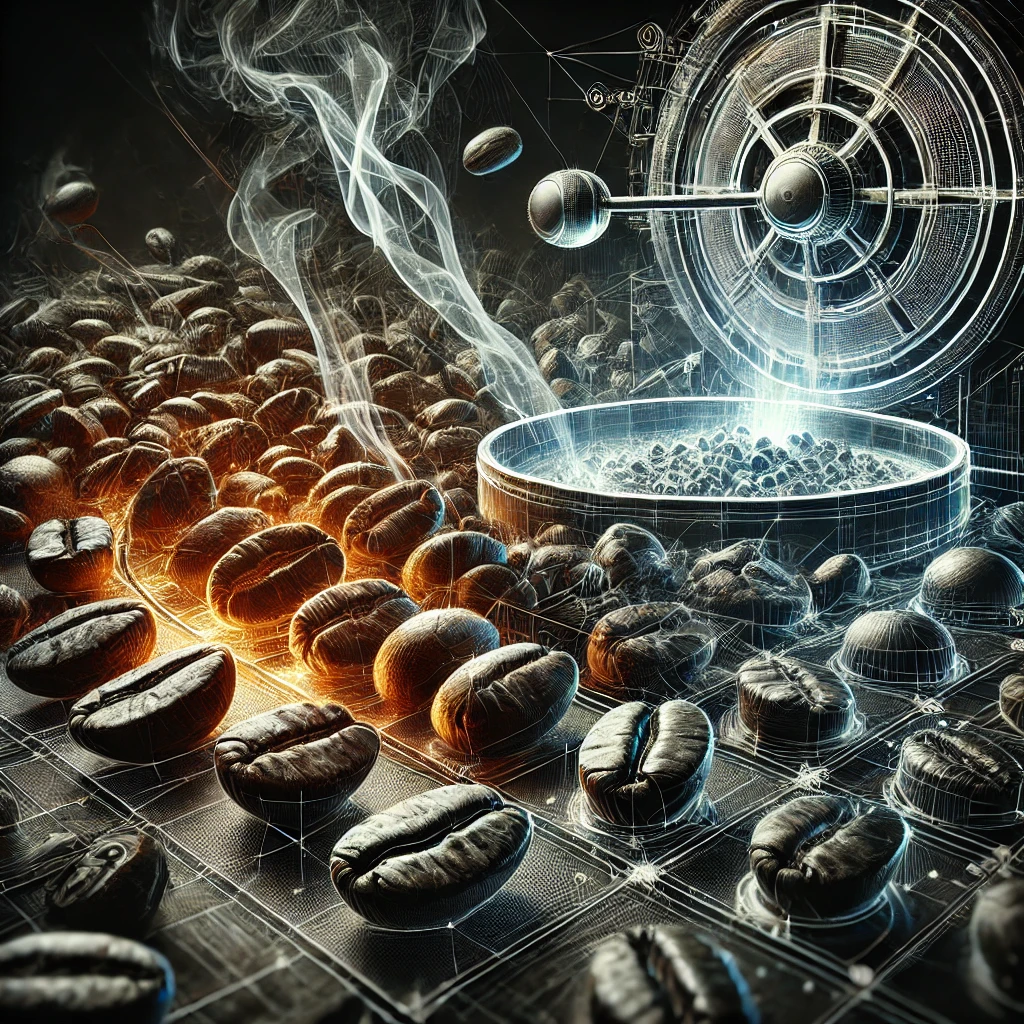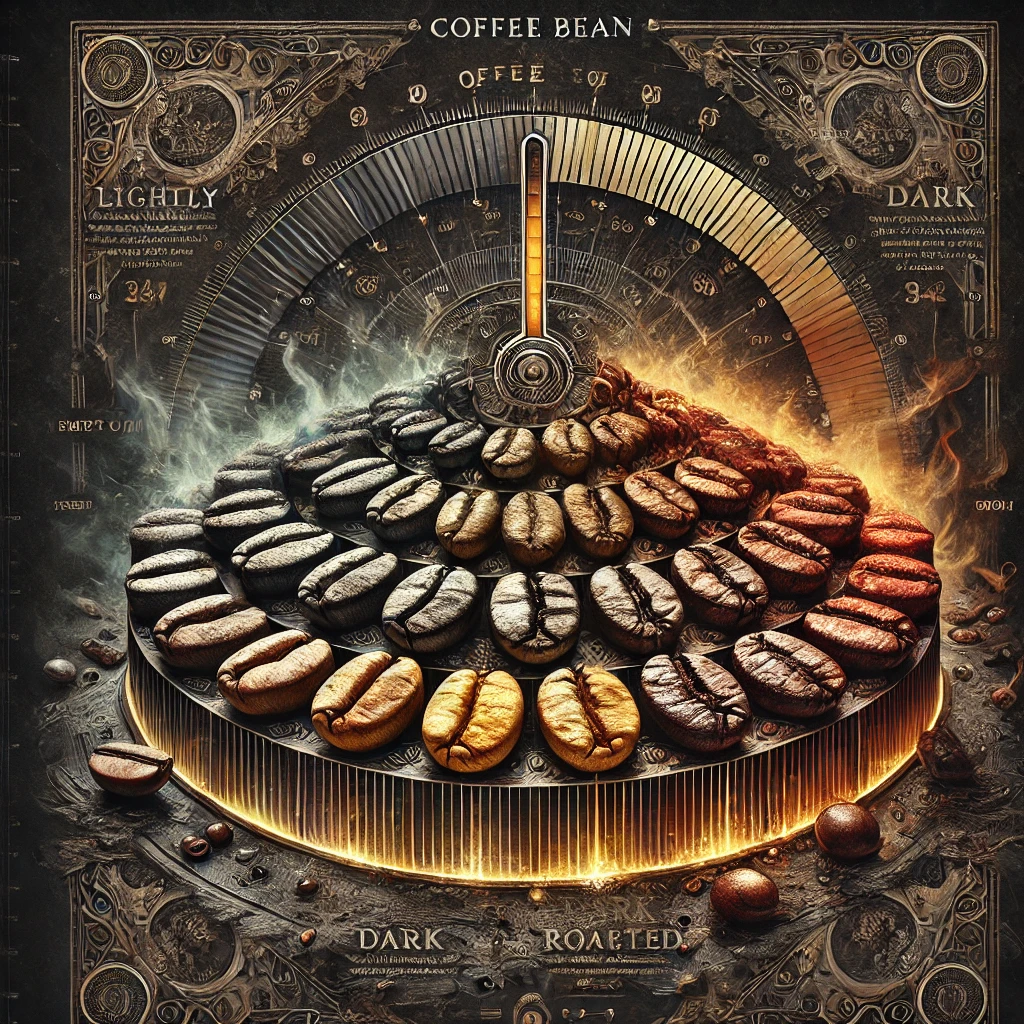Raw coffee beans are about as metal as an unplugged acoustic guitar at a death metal show – green, soft, and completely useless for your morning ritual. But through the brutal art of roasting, these pathetic seeds transform into the black gold that fuels our darkness. Let’s dive into the hellfire process that turns virgin beans into the devil’s breakfast.
The Science Behind the Darkness
When raw beans enter the roaster, they’re about to experience more heat than a Norwegian church in the ’90s. The first major transformation happens at what roasters call “first crack” – the moment beans literally scream as they break down and reshape themselves.

At around 385°F (196°C), the beans hit their first crack, releasing stored energy in a series of sharp pops that sound like a mini mosh pit. This is where the real transformation begins – sugars caramelize, oils develop, and flavors intensify. Your dark roast enthusiasts mug is about to meet its destiny.
The chemical chaos happening inside each bean would make a chemist headbang in approval: Maillard reactions create hundreds of new compounds, with over 1,000 aroma-active molecules identified in roasted coffee, acids break down, and aromatics develop. According to the Specialty Coffee Association’s comprehensive roasting standards, maintaining precise temperature control through these transformations is crucial for optimal flavor development. It’s basically a chemical mosh pit that turns bland green beans into complex flavor bombs.
Roast Levels: From Light to Brutal
Like metal genres, coffee roasts exist on a spectrum of intensity:
Light Roasts: The pop punk of coffee. Bright, acidic, and still holding onto their original character. They crack once and tap out early, typically around 401°F (205°C). Perfect for your morning pour-over in your inspirational coffee mug while you build up to the heavier stuff.
Medium Roasts: The sweet spot between light and dark, like melodic death metal balancing brutality with complexity. They’ve survived first crack but haven’t gone full Norwegian black metal yet.
Dark Roasts: Where true darkness dwells. These beans have endured both first and second crack, emerging with oils on the surface and a color darker than a doom metal guitarist’s soul. They’ve lost their origin characteristics but gained intensity and power.

Common Roasting Methods
Commercial drum roasters are the stadium headliners of the coffee world – big, reliable, and consistent. They tumble beans through heat like a circle pit keeps moving through a breakdown. Hot air roasters are the technical death metal approach – precise, controlled, and all about timing.
For the DIY crowd, home roasting is like playing basement shows. You can start with a simple heat gun or modified popcorn popper, but be warned – it’s easy to turn your beans into the equivalent of a burned-out amplifier if you don’t know what you’re doing.
The Art of Controlled Chaos
Roasting coffee is controlled chaos – push too far and you’ll burn your beans to ash; pull back too early and you’ll be stuck with grassy, underdeveloped flavors. The perfect roast, like the perfect riff, requires timing, technique, and an understanding of your craft.
Remember: A good roaster is like a skilled sound engineer – they know exactly how to dial in the levels to create something brutal yet balanced. Now go forth and appreciate the darkness in your cup with the knowledge of how it got there.
